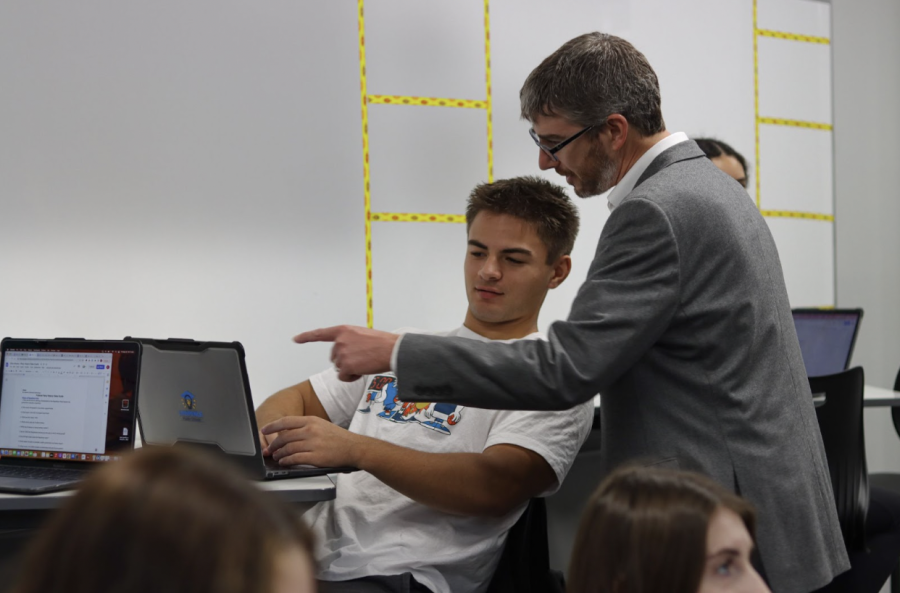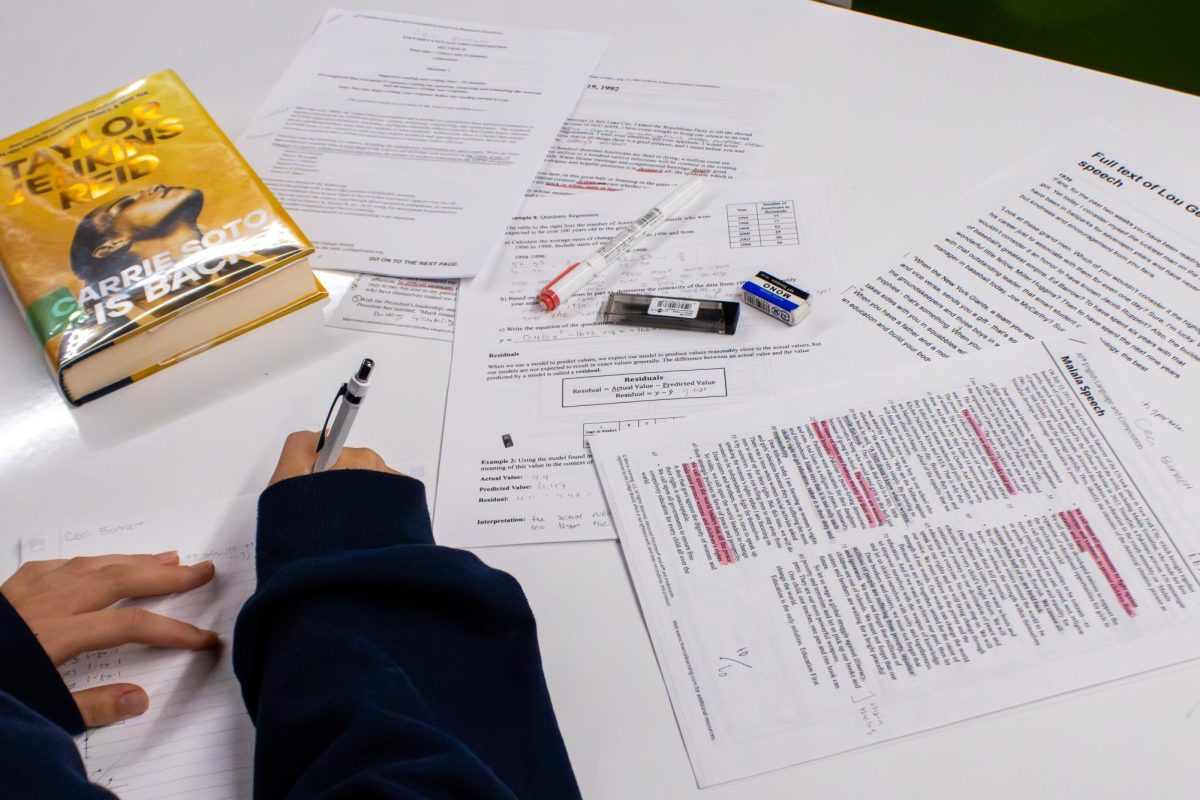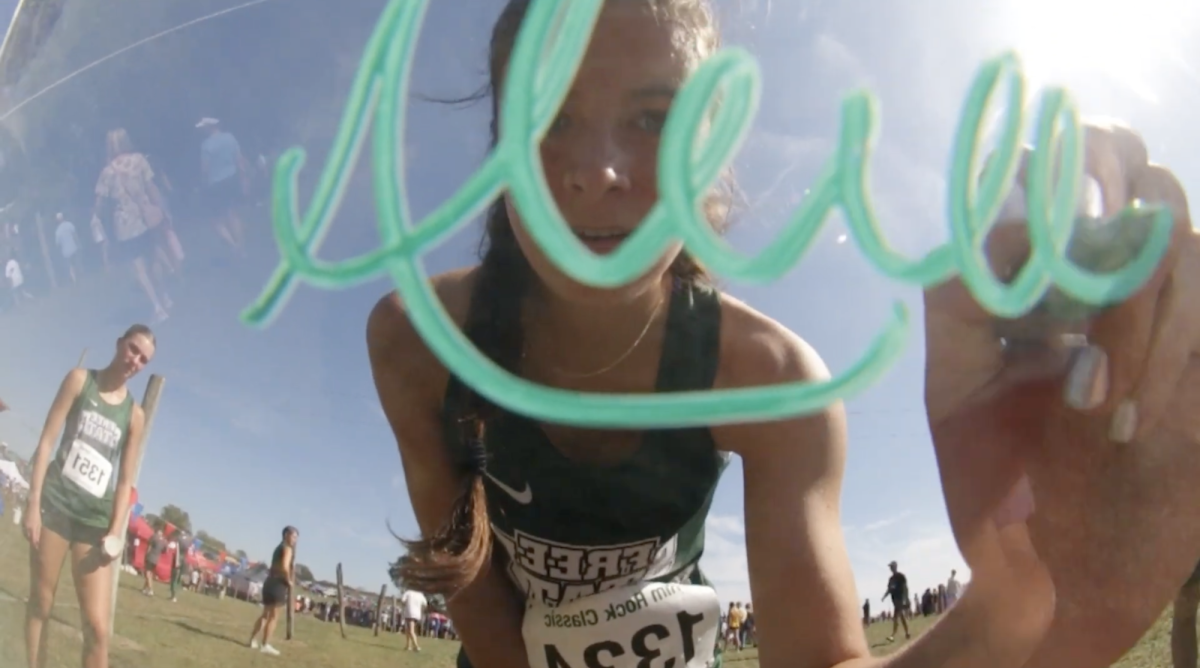NEWS: Teachers Juggle Pay Freezes, Increased Class Sizes, and Workload
The USD497 budget crisis and lingering effects of COVID-19 provides new challenges for teachers.
October 6, 2022
While any job has its own set of challenges, a poll from the nation’s largest teachers union said 55% of teachers are hoping to leave education earlier than planned. Locally, since the start of the school year, students have seen an increase in their class sizes, a lack of substitute teachers, and other teachers covering classes. While this may be a slight annoyance for students, it’s only part of the difficulties teachers now say they are facing.
TEACHER PAY
Due to the USD497 budget crisis, in addition to some student programs being cut, other financial woes are impacting teachers as well. Despite this year’s 1.8% increase in pay, budget issues have caused staff members to experience vertical pay freezes.
Teachers are paid based on where they land on the salary schedule. On the matrix, they can move to the right to receive more pay for additional education (for example, earning a master’s degree), and they can move down to receive more pay for additional experience (a slight bump in their salary each year). However, because of the vertical freeze this year, they will not receive the additional compensation for an additional year of experience as expected.
While social studies teacher Blake Swenson has only been teaching at Free State for six years, he has already experienced two consecutive pay freezes. That means instead of being on step six on the salary matrix, he is currently on step four.
“[The district] have been pretty much living paycheck to paycheck,” Swenson said. “[Teacher’s] financial benefits aren’t as great [which] creates all these other problems.”
LARGER CLASS SIZES
One of those problems includes district-wide staff shortages, as some teachers have completely left the profession and others are drawn to districts with slightly higher pay. Without the ability to attract, or fully compensate teachers, class sizes have significantly increased because not every position is filled.
Science teacher Wendy Haas typically teaches an average of 140 students. This year, she has around 160 students, the equivalent to an additional full class. With her largest class being 31 students, she said it has proved a difficult environment for both her and her students.
“When you’re in this space it adds a level [where] the kids aren’t as relaxed…which I totally understand, there’s a lot of people in there,” Haas said. “I am a little concerned when we start doing more cellular and microscope work. I mean, they’re gonna be kind of shoulder-to-shoulder looking.”
COVERING UNFILLED SUB POSITIONS
Increased class sizes also add additional time commitments for teachers who do not have a lot of time to spare. During the week, teachers are in charge of creating lesson plans, grading assignments, giving feedback, attending training and more. While teachers are given four hours and 15 minutes of plan period a week, many teachers find themselves working after hours, on weekends, and even holidays trying to complete their work.
Aimee Landwehr is a former history teacher who left Free State two years ago. She is currently pursuing a new career in UX design.
“There was just never enough time to do everything that needed to be done and do it well,” Landwehr said. “Let’s imagine a teacher who has 125 students on their roster. If that teacher [allotted] one minute to provide feedback for every student every single week, that’s two hours [or] 40% of their plan time devoted just to that one minute. [It’s] not really adequate enough to give proper feedback and that’s only one time a week.”
Adding to the plan time responsibilities, a lack of substitute teachers has also infringed on that time, asking teachers to fill in for coworkers. With some teachers being pulled away from classes, either for sports or personal reasons, others are being asked to give up their plan time to help cover.
According to Haas, teachers are receiving about three to four emails a week with requests from administration to cover a class. While Haas feels guilty, she has to prioritize her own class.
“I try to help but honestly my plan period becomes especially [important] since I have a lab class,” Haas said. “I have to have that time to set up a lab.”
LINGERING COVID-19 IMPACTS
However, issues caused by the USD 497 district budget crisis only scratches the surface of troubles educators now face. On a daily basis, teachers have been working to tackle challenges caused by the lingering effects of the COVID-19 pandemic.
After being online for almost two years, many teachers have noticed gaps in student’s learning. Whether it’s struggling with academic concepts or difficulties with adjusting to a high school environment, many teachers are seeing it manifest in an increase in student anxiety, depression, and lack of motivation.
“Anxiety has been a big challenge for a lot of students and helping them navigate their anxiety, and feel good about being at school, has been big,” Haas said. “It’s been hard.”
SOCIETY’S VIEW OF TEACHERS
While teachers are working to handle these challenges, some believe they stem from a larger issue.
“As a society we haven’t really decided to value education,” Landwehr said. “There’s a lot of lip service [about] valuing education, and valuing students, learners, and valuing teachers. But unfortunately, when it comes time to resourcing education as a pursuit, we just generally don’t do it.”
For Swenson, the most impactful way to help teachers starts with increasing the Kansas’ education budget. For this to happen, more advocates for education must be elected onto the Kansas’ state legislature.
“There’s a political party, or political advocacy, that just doesn’t want the government to be involved in education. So they’re going to continually fight against it,” Swenson said. “That’s where teachers got to think… How can we work at the political level to change what the makeup of Congress is? How can we get more people that advocate for schools?”
Despite all of these challenges, teachers still show up to school each day ready to face whatever comes. For Haas, teaching has allowed her to form great relationships with both fellow staff members and students.
“I like that I get to keep learning things myself,” Haas said. “I go home with stories every day. So the relationships that I have with my colleagues and my students, I mean, that’s what keeps me in it.”








